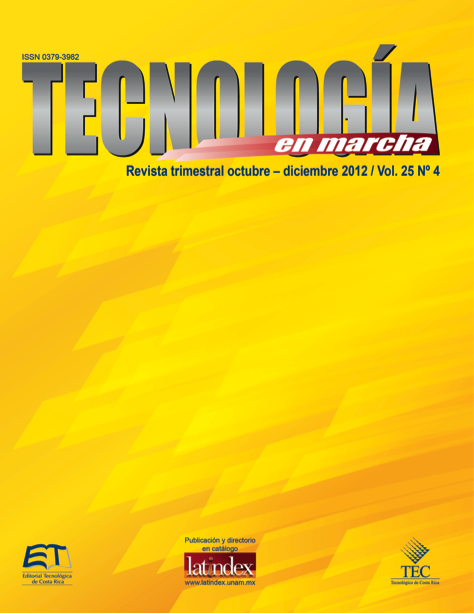Estimation of the nopal cactus (Opuntia cochenillifera) for color removal in drinking water
Main Article Content
Abstract
The efficiency of nopal cactus to remove color in river and artificial waters for human consumption was evaluated. The performance of nopal was compared with that of aluminum sulfate coagulant and a cationic flocculant.The river water was cha- racterized by high color, low turbidity, alkalinity and hardness, and a high percentage of dissolved oxygen.
The cactus leaves showed no activity as unique coa- gulant to be evaluated only in river water. In artificial water, as a sole treatment (45 mg/l), an efficiency of 94% in color removal was observed, slightly higher than that of the conventional treatment (20 mg/l Al2 (SO4)3 and 2 mg/l of cationic flocculant) with a removal of 89%.
However, water treated with nopal left a residual COD value doubled (21 mg/l) compared to con- ventional treatment. In the treatment of artificial water, nopal as a flocculant showed a color removal of 92% and a residual COD of 31.5 mg /l applied at a dose of 22.5 mg/l and 7 mg/l of Al2 (SO4)3. The nopal was not very effective to remove the color produced by humic substances in waters of low turbidity and alkalinity, but its applicability as a coagulant/flocculant in waters of high turbidity and alkalinity is promising.
It is recommended to extract the active ingredients of natural products to reduce the organic load of treated water and prevent the formation of disin- fection byproducts.
Article Details
Los autores conservan los derechos de autor y ceden a la revista el derecho de la primera publicación y pueda editarlo, reproducirlo, distribuirlo, exhibirlo y comunicarlo en el país y en el extranjero mediante medios impresos y electrónicos. Asimismo, asumen el compromiso sobre cualquier litigio o reclamación relacionada con derechos de propiedad intelectual, exonerando de responsabilidad a la Editorial Tecnológica de Costa Rica. Además, se establece que los autores pueden realizar otros acuerdos contractuales independientes y adicionales para la distribución no exclusiva de la versión del artículo publicado en esta revista (p. ej., incluirlo en un repositorio institucional o publicarlo en un libro) siempre que indiquen claramente que el trabajo se publicó por primera vez en esta revista.

